UAF® Summit 2024: Actionable Architecture in the 21st Century - A Hybrid Event
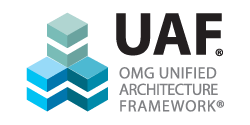
The UAF® Summit 2024 will present the latest thinking around enterprise and system of systems architecture with real-world examples.
The need for architecture-based decision making has never been more important. Industry, government, and DoD are driving us towards implementing architecture enabled digital engineering transformation. This transformation provides the means to connect information across and within enterprises. The intent of this summit is to present the latest thinking around enterprise and system of systems architecture with examples of how UAF can be developed and used to provide timely and accurate information to decision makers.
Agenda
| time | presentation |
|---|---|
| 9:00 - 9:30 AM | 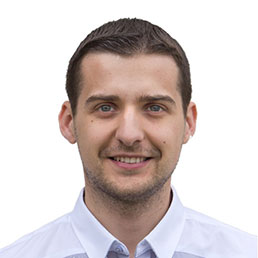 This presentation features introduction to the event and introduction to Unified Architecture Framework (UAF), its purpose, adoption, and the roadmap. It highlights what's new is coming with UAF V2. Presenter: Dr. Aurelijus Morkevicius, Industry Process Consulting Director, Dassault Systemes |
| 9:30 - 10:15 | KEYNOTE #1: The Dawn of Enterprise Architecture in The Air Force 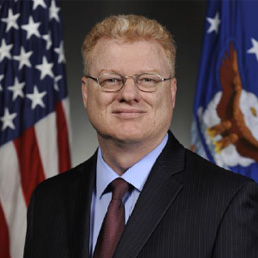 The Air Force has long used DoDAF to document solutions architectures at the systems level while using a completely separate and ever-changing variety of documents to plan our forces and their capabilities. With the advent of UAF, the Air Force is just beginning to use model-based systems engineering principles at a truly enterprise level to analyze and define the structure of our future forces and to build genuinely integrated plans for developing new capabilities. Challenges abound with educating service members on modern architecting approaches, nurturing the seedlings of current efforts, and unifying our efforts across organizations and priorities. This talk will cover the goals, challenges, and progress of Air Force enterprise architecting. Presenter: Jeffrey W. Eggers, DISL, Air Force ISR Chief Architect |
| 10:15 - 10:45 | Break |
| 10:45 - 11:15 | 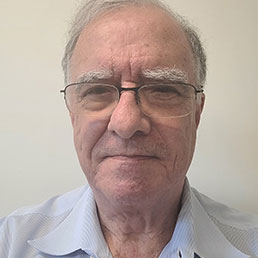 There are a number of drivers which show a movement away from centralized architecture towards a federated set of models which integrate. The availability of modeling to the Stakeholder requires easier to understand notation and the mechanism to segment the problem space towards stakeholder collaboration. In UAF, primary stakeholders may be the Actual Organization Resources exhibiting Capability in scope.
Stakeholders can create or consume models
Some subject areas need segmentation and others need consolidation. Regardless, the models have relationships where the role is consumer or producer for a particular exchange. Presenter: Tony Mallia, Senior Enterprise Architect, Odyssey Consulting |
| 11:15 - 11:45 | Enabling Enterprise Transformation Using Enterprise Architecture Principles and Concepts 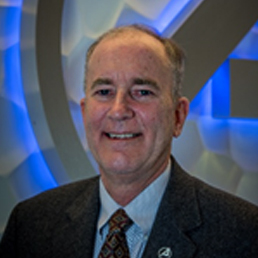 Systems Engineering as a profession is failing to keep pace with the rapidly changing world situation, and we need to embrace enterprise transformation as a way to address these challenges. Enterprise Systems Engineering (ESE) processes and methods can provide the ways and means that are essential for helping us manage increasing complexity, as well as improve the quality and timeliness of key decisions regarding enterprise capabilities, and adjust the portfolios of programs, projects, systems, services, and organizations that underpin those capabilities. Enabling the cost-effective and timely resolution of strategic and operational capability gaps and shortfalls will ensure more efficient use of limited time and resources and it will increase the likelihood of achieving enterprise goals and objectives. An ESE-enabled enterprise is better able to conduct trades across competing concerns about strategy, policy, capability, operations, and implementation, in a similar way that traditional SE practice performs tradeoff analyses among the functions, performance, physical parameters and structure to help realize more effective systems. This approach will result in more robust business and mission analyses, more balanced plans and deliveries, and more highly integrated collections of systems, products, and services to rapidly meet evolving enterprise objectives. This paper explores the nature of Enterprise Systems Engineering, the various roles that ESE can play in enterprise transformation, and the value and application of Enterprise Architecture at the Enterprise level. Presenters: James Martin, Distinguished Engineer, The Aerospace Corporation |
| 11:45 - 12:15 | Applying UAF for Dairy & Livestock Production Systems Engineering 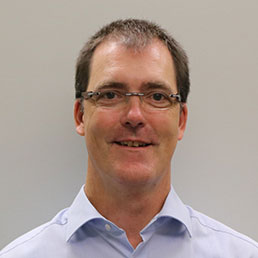 Farming systems are facing tremendous challenges such as climate change, reduction of arable land, increasing food demand, international and national regulations, volatile commodity prices and labor shortage. Digitization, Autonomy, Internet of Things, and sustainable farming are driving the transformation to face these challenges, while food demand is increasing. Considering a farm as a complex production system leads to agricultural process optimization and customer-focused innovation. System-of-Systems-Engineering is a paradigm behind this transformation. Standards such as UAF emerged as a new way for Production Systems Engineering. The framework makes it possible to develop complex relationships and interactions between systems capabilities and resources (such as workforce, animals, field, machinery, processes, services, etc.) while considering economic and ecological value streams. The UAF provides a viable framework of standardized views from which to model different aspects of a production system. UAF is a complementary approach to MBSE/SysML. Combining these approaches enables consistent and coherent models across system layers and is a means to derive well-defined requirements out of production system needs and demands for farm resources (e.g. tractors). This session demonstrates the application of UAF to build the foundation of a digital twin of a Dairy & Livestock (D&L) farm and discusses lessons learned from an industry perspective. Presenter: Dr.-Ing. Christian von Holst, Global Tractor Systems Engineering Lead @ John Deere GmbH & CO KG |
| 12:15 - 13:30 | Lunch Break |
| 13:30 - 14:15 | KEYNOTE #2: Digital Mission Architecture. Architecture-Based Decision Making for Mission Engineering and Integration 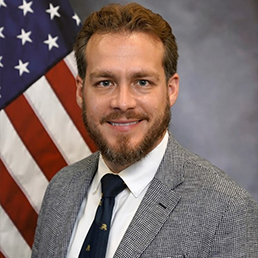 "The Under Secretary of Defense for Research and Engineering (USD(R&E)) defines the Department of Defense (DoD) mission engineering policy and implements related practices and operational analyses in an end-to-end mission context . Mission engineering enables the Office of the USD(R&E) (OUSD(R&E)) and the DoD to identify capability and technology gaps, provide mission-based solutions, and inform investments in technology development, prototyping, experimentation, procurement, and fielding. The Mission Integration Directorate within the OUSD(R&E) is responsible for the planning and execution of mission engineering studies to evaluate priority challenges identified by the Office of the Secretary of Defense, Joint Staff, Combatant Commands, Military Departments, and Uniformed Services. Digital mission architectures are the analytical blueprints of mission engineering studies and expand on model-based systems engineering (MBSE) concepts to develop an enterprise understanding of the complex relationships between operational activities/tasks, capabilities/systems, organizations, end-to-end system-of-system flows, and sequences of actions. Mission engineering threads that incorporate fielded and emerging capabilities provide actionable architectures to analyze current operations and future alternatives and trace their relations to mission threads validated by the operational community. These mission architectures inform Senior Leaders to optimize decisions by connecting information across the DoD enterprise. The Chief Engineer for Digital Mission Architecture has engaged with various organizations developing mission engineering threads to identify best practices and opportunities for standardization, explore courses of action, and form a group to develop and implement Department-wide guidance, to include evaluation of the Unified Architecture Framework as an enabler for Mission Engineering. Topics: Mission Engineering / System of Systems; Actionable Architecture; Model Based Systems Engineering (MBSE); Unified Architecture Framework" Presenter: Jaime J. Bestard, Chief Engineer, Digital Mission Architecture, Department of Defense |
| 14:15 - 14:45 | Darth Vader's Secret Weapon: Implementing Mission Engineering with UAF 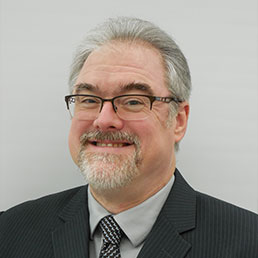 When planning and conducting a mission engineering study, it is important to have a complete, correct, and coherent model of the mission architecture. The Unified Architecture Framework (UAF) has been found to be effective for this purpose. This paper will explore some of necessary modeling features and constructs that will enable this to occur. The proposed extensions for UAF to better support Mission Engineering include Missions, Mission Phases, Mission Thread, Mission Engineering Thread, Effects and Outcomes, variety of measures, additional attributes/stereotypes such as differentiation between enemy/friendly/neutral - Blue Force, Red Force, etc., provenance/confidence of enemy resources, etc. We created a prototype model using the Battle of Hoth from Star Wars as a proof of concept for these modeling extensions and used the process and mission engineering concepts defined in the Mission Engineering Guide (MEG). Concepts that will also be explored include compatibility with the Model-Based Acquisition (MBAcq) approach, recent initiatives from the Office of the Assistant Secretary of Defense for Mission Capabilities, Enterprise Systems Engineering (ESE) process and methods, detailed resource engagement, use of different modeling languages (e.g., Systems Modeling Language (SysML), SysML v2 and UAF v2), and so forth. Finally, we will summarize the research and modeling done to date and explore these additional concepts as well as new ideas introduced in the MEG v2. Presenter: Matthew Hause, Principal, SSI/INCOSE |
| 14:45 - 15:15 | 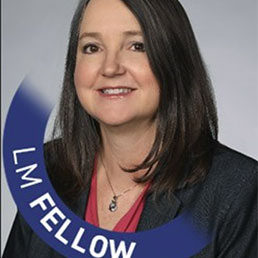 Standard use of standards - How to get the most of standards like UAF and SysML. "Customers are increasingly incorporating modeling in acquisition to improve evaluation, engineering, and governance. The challenge is the lack of standardization, which raises proposal learning curves and compliance risk," said Laura Hart, Lockheed Martin Fellow and co-chair of the OMG MBAcq User Community and the OMG UAF Revision Task Force. "Model-based acquisition is not just a proposal packaging choice. It is about applying systems thinking and good systems engineering, specifically good MBSE, to address the full life cycle during acquisition. Our ultimate goal is to support born digital programs." "The MBAcq User Community will enable participating members to access a wealth of cutting-edge insights at the forefront of the industry, working on projects shaping the future of MBSE specifications and reference architectures," said Bill Hoffman, Chairman and CEO of OMG. "MBAcq User Community members will obtain value through networking and participation in developing community products, giving them a competitive advantage." OMG Managed Communities will help companies simplify processes, eliminate industry barriers, and create purpose with a community of experts. By joining an OMG Community, companies can become involved in industry projects that will advance their expertise and set them apart from their peers. Presenter: Laura Hart, Fellow, Lockheed Martin |
| 15:15 - 15:45 | Break |
| 15:45 - 16:15 | MOSA Domain Overlay – Status Update 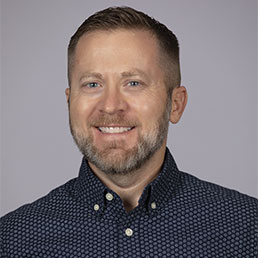 Developing a system architecture that embodies Modular Open Systems Approach (MOSA) principles is not an easy task. There are numerous technical considerations, each with potentially significant business impacts. What works for one program office may not work for another, thus making a "one-size-fits-all" MOSA strategy impractical if not impossible. Any assessment of how well a system architecture is applying MOSA principles is, in practice, specific to how an organization wants to maximize the value of a MOSA (i.e., its strategy). Achieving maximum MOSA value for a given program or organization doesn't necessarily mean everything modular and everything open. Selection of appropriate MOSA metrics to assess MOSA compliance is highly contextual and requires defensible justification. This presentation will provide a status update of the MOSA Domain Overlay being developed in collaboration with the Model-Based Acquisition User Group and the NDIA SE Architecture Committee. The presentation will explore and discuss the suitability of UAF in expressing the MOSA value proposition of an enterprise. A key aspect that will be discussed are potential gaps due to what works in the language and framework "out-of-the-box" versus what must be created and included to meet the MOSA Domain Overlay objectives. Lastly, the presentation will conclude with a discussion on an approach for the systematic identification of relevant MOSA metrics based on contextualized and justifiable business considerations. Presenter: Richard Wise, Senior Research Engineer, Georgia Tech Research Institute |
| 16:15 - 16:45 | 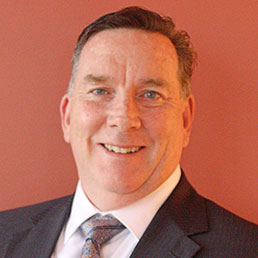 As MBSE practices mature in organizations, the question of "should we use UAF or SySML?" often arises. This question indicates that many engineers don't understand the relationship between these two modeling languages and how they can and should be used together to answer different questions from various stakeholders. This paper will provide a brief overview of each language, its intended purposes and then provide a working example of how the two languages complement each other, aiding the decision process at every stakeholder level. Presenters: Laura Hart, Research Engineer Senior Manager, Lockheed Martin; Gene Shreve, Senior Systems Engineer, Integration Innovation, Inc. |
| 16:45 - 17:00 | Closing/QA/Discussion Presenter: Aurelijus Morkevicius,Ph.D; Laura Hart; Matthew Hause |
Discounts
- Hotel Discount: Single/Double Occupancy USD $259 plus 13% state and local taxes (Deadline: February 23, 2024)
About the United Architecture Framework (UAF®)
The Unified Architecture Framework® (UAF®) is based on the Unified Modeling Language™ (UML®), Systems Modeling Language™ (SysML®), the Unified Profile for the U.S. Department of Defense's Architecture Framework (DoDAF) and the U.K.'s Ministry of Defence's Architecture Framework (MoDAF™) (UPDM™) and the North Atlantic Treaty Organization's (NATO) Architecture Framework (NAF). When these military requirements were combined with business sector requirements (90% of concepts and themes captured in the military frameworks are equally applicable in the commercial domains), the UAF was born which serves both commercial and military interests.
Participants include a broad spectrum of parties covering industry, tool vendors, end users and representatives of the DoD, MoD, and NATO.
UAF defines ways of representing an enterprise architecture that enables stakeholders to focus on specific areas of interest in the enterprise while retaining sight of the big picture. UAF meets the specific business, operational and systems-of-systems integration needs of commercial and industrial enterprises as well as defense organizations.